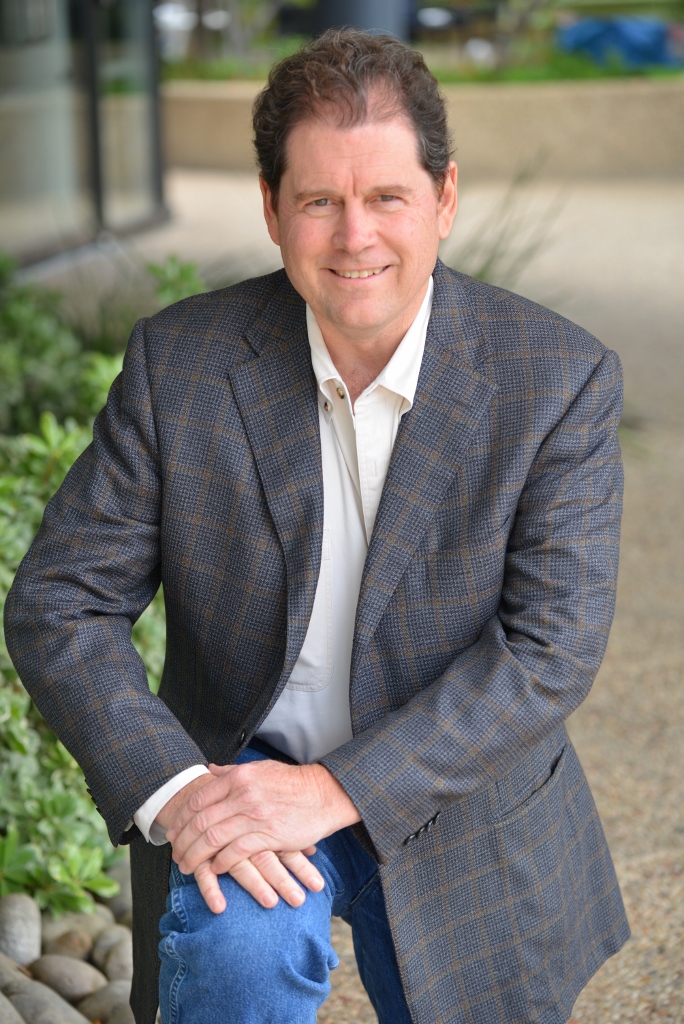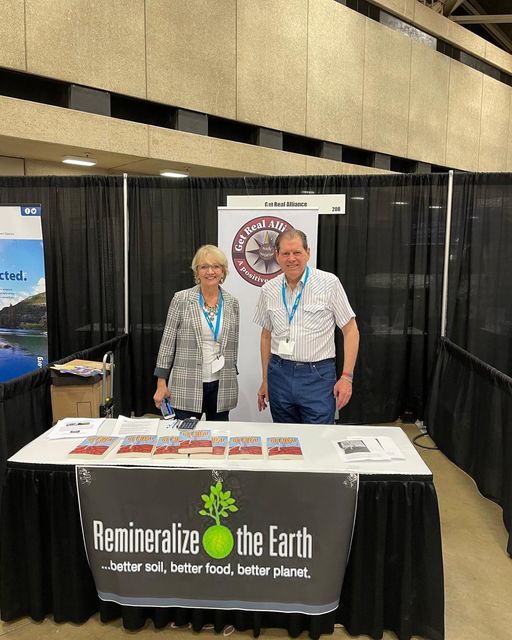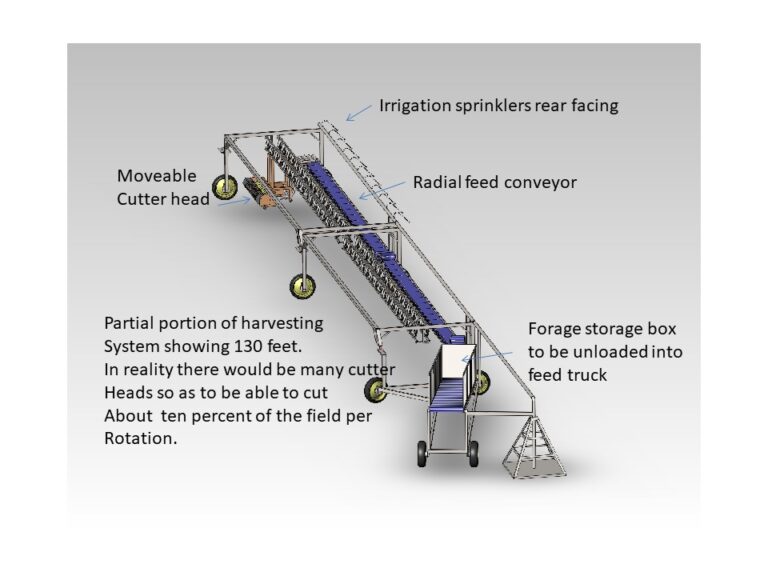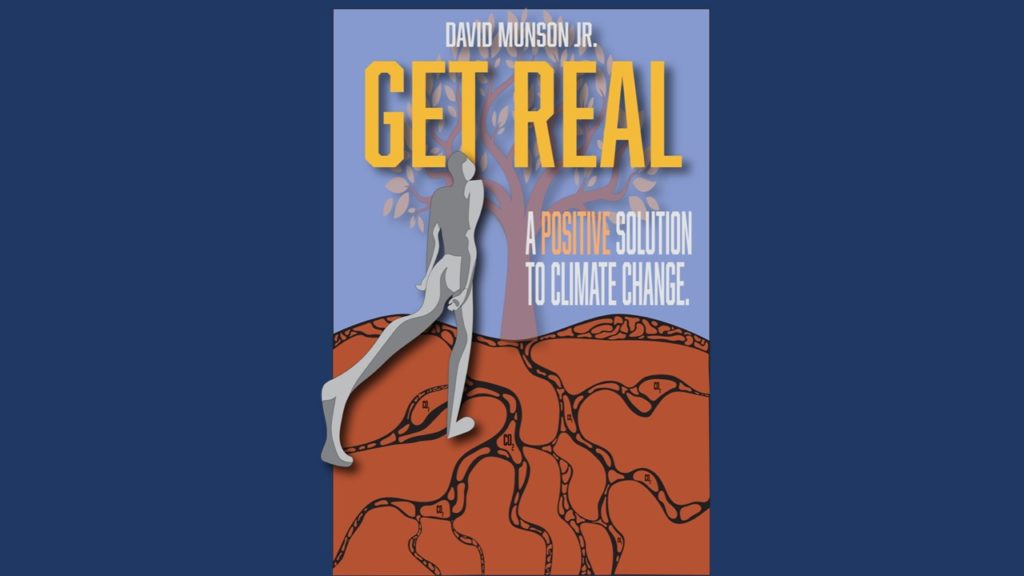Getting Real: Munson’s New Book Calls For A ‘Positive Solution To Climate Change’
Remineralizing the planet increases soils’ ability to produce flora capable of absorbing and storing atmospheric carbon dioxide, thus combating global climate change without resorting to the elimination of hydrocarbons from the energy mix — that is a central theme from David Munson’s Get Real: A Positive Solution to Climate Change.

In his new book, this entrepreneur and inventor also calls for more biochar production and implementation of holistic and regenerative agricultural practices en masse, along with somewhat unorthodox methods for spreading crushed rock dust to all corners of the world. Further, he invites readers to support RTE and its mission.
“Good things can happen with far less funding through nonprofits, rather than any government behemoth that creates the wrong solutions to the wrong problems with a heavy bureaucratic cost,” he states in his book.
However, Munson admits that his vision for an environmentally-friendlier future might not align with the current zeitgeist in terms of environmentalist action. As noted above, for example, this Texan landowner believes a near-term elimination of oil and gas production would have overtly-negative consequences across humanity. Rather, he supports increasing the earth’s ability to absorb CO2 through soil-rejuvenating methods such as rock-dust remineralization.
Munson writes: “It is great news that we can solve the issue of rising CO2 without stopping the use of oil and gas. This approach opposes the mantra of the climate community that gives no credit to remineralization and regenerative agricultural practices.”
Ultimately, Get Real is a rallying call to those who want ‘practical solutions’ to the environmental problems facing humanity and the planet.
“A global program is needed with the largest amount spent on remineralization because so much of the world is very badly demineralized, including the precious Amazon,” Munson says, adding millennia of bad farming practices (and little remineralization) equates to poor soil worldwide. “The difference between regenerative agriculture and the dominant chemical farming system is like the difference between the soil life of a lush garden and that of a desert.”
While the Get Real Alliance founder advocates for a program concerned with fixing the physical state of earth in order to reduce CO2 levels, he does not see CO2 inherently as a problem for the planet — quite the opposite, actually. Munson writes: “People have become so fixated on thinking of CO2 as a bad thing that they forget that it is a limiting nutrient for plants if all other nutrients are available and that lowering it will reduce food production.”
Role for Rock Dust

The ‘Get Real’ goal is to increase photosynthesis and carbon sequestration so the world can lower atmospheric CO2 levels while still burning oil, natural gas and some coal (as necessary), according to Munson’s chapter on rock dust and soil remineralization. Quite simply: Right rock dust application in the right places makes for a better world.
“We can reproduce what the glaciers have done, grinding up rock into dust and applying it to land and sea,” writes the author. “In particular, the application of basalt rock dust is a proven effective soil remineralizer, and many millions of tons of it are already available worldwide as a byproduct of the resource economy.”
He adds: “Rock dust remineralization of soils takes advantage of the most abundant carbon sink on the planet to passively remove CO2 from the atmosphere while also improving soil fertility.”
In terms of his potentially ‘less-conventional’ opinions, Munson also discusses the relationship between basalt and paramagnetism — a phenomenon that he sees as advantageous for photosynthesis and requiring more research. “As we continue to evolve the richness in our soils, it will be exciting to see the increased impacts of paramagnetic materials.”
Meanwhile, on the technology front, Munson envisions (for example) wind-powered grinders reducing basalt into fine powder and a fleet of massive, potentially wind-powered ocean-going vessels transporting rock dust from coastal quarries to regions lacking in natural basalt. On the way, fine rock particles would blow onto the water, remineralizing the seas. “We must think boldly, changing the way our species does things, in order to remineralize the world.”
Technology matters

By training, Munson is an engineer, and it shows in his book, which highlights some unique innovations he sees as having potentially-beneficial impacts for the planet. For example, when it comes to transporting tons of rock dust to do remote, intact-forest remineralization, the author highlights specialized low-speed airships as a possible solution.
“There would be a steady stream of lighter-than-air transport crafts bringing rock dust and taking biochar from the operations center to a distribution base located on the nearest highway or all-weather road,” he says, adding technology to remineralize the earth “has already mostly been developed and is available,” although there is room for technological improvements to make these processes more sustainable and efficient.
Munson’s book also looks at his patented Prairie Grass Systems — an irrigation system that could facilitate growth of native grasses for cattle feed, while also potentially acting as a remineralization-distribution vessel.
All part of the program
Remineralization of both land and sea is a major part of the ‘Get Real’ approach, according to Munson, as without minerals life cannot sequester carbon and the earth is currently demineralized. Citizens and companies should consider contributing to Remineralize the Earth as part of the solution, he writes.
Further, “by reading and investing in real change as outlined in intricate detail in The Get Real Program and other gems provided throughout this book,” the reader will better understand the “real change” that is needed to solve those environmental challenges facing politicians and the general public. Sadly, suggests Munson, environmental action too often misses the mark on what is ‘right action’. His book and the program it supports are trying to help.
“Real change cannot happen in a state of deliberation,” he says. “The luxury of inaction has ceased. The solutions are at hand. Let’s begin before our provisions end.”
Carter Haydu is a journalist and professional writer with more than 13 years of experience. Since 2012, he has written primarily on the Alberta energy sector for a Calgary-based trade publication. Much of his work has dealt with environmental issues facing the upstream oil and gas industry. In 2018, Carter attained a technical writing certificate from a reputable Canadian university. He hopes his skillset can support RTE’s sustainable initiatives.
Support us on Patreon
Thank you for joining us today! Please become a member of RTE and support us on Patreon. Unlike many larger organizations, we work with a team of determined and passionate volunteers to get our message out. We aim to continue to increase the awareness of remineralization to initiate projects across the globe that remineralize soils, grow nutrient dense food, regenerate our forests’ and stabilize the climate – with your help! If you can, please support us on a monthly basis from just $2, rest assured that you are making a big impact every single month in support of our mission. Thank you!








Got something to say?